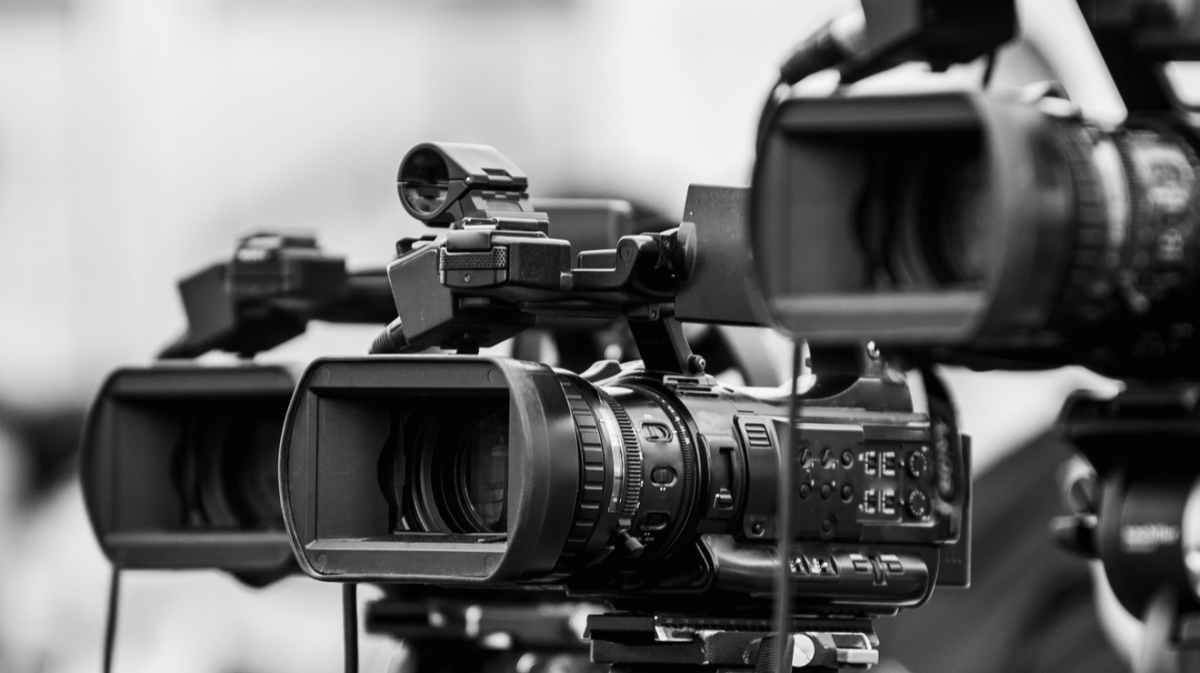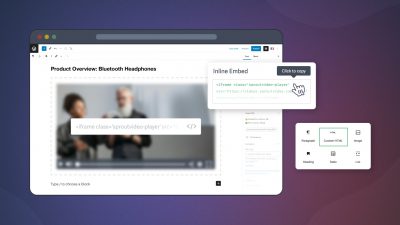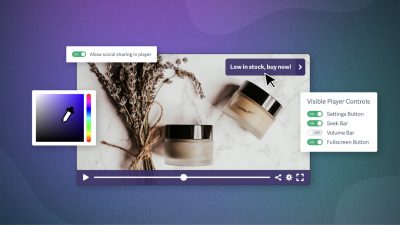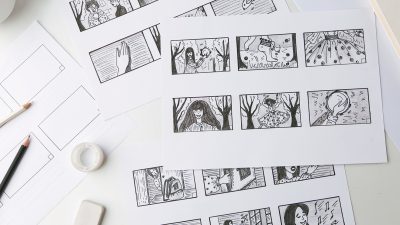Image of Video Cameras from Microgen/Shutterstock
There are so many options for cameras on the market. Choosing the right one to purchase, or just to use for a video project, can be challenging. In fact, there really isn’t a single right answer to the question, “Which camera should I use?”
Instead, we’d like to defer to the experts on this topic. We surveyed four professional videographers to learn what they consider to be their go-to camera – the one they reach for time and again. Keep reading for amazing insights into which camera systems the pros use, and why.
Meet the Experts
At SproutVideo, we’re lucky to be connected to a network of professional videographers by our mutual passion for all things video. Here are four of our friends who were kind enough to share their expert opinions on this all-important choice for anyone producing video.
Scott Jansson
Scott has more than a decade of experience filming documentaries, food videos, corporate videos, and broadcast news. You may even recognize him because he collaborated with SproutVideo on our horror video lighting tutorial. He splits his time primarily between New York City and the Boston area, though he frequently works internationally too. Scott typically works with a crew size of one to six people on his shoots.
Edu Rabin
Edu lives in Porto Allegre, Brazil, and has a decade of experience filming commercials, TV dramas, and feature films. His clients are typically regional networks or companies, and he mainly films on location. On an average production, Edu typically loops in a gaffer, grip, camera assistants, and loggers, as well as up to four additional assistants.
Stephan Alessi
Stephan’s fashion, athletic wear, and beauty shoots have taken him all over the world, though he often works in New York City where he’s based. Although he’s been filming for around seven years, he only started focusing on videography three years ago. When shooting stills, it’s often just Stephan and one other person, but on larger shoots, a crew of eight to ten is more typical.
Ben McIntre
Based in Stockholm, Sweden, Ben primarily works on documentary films, with nearly four underway at the time of writing. He also produces shorts and commercial work, and counts NGOs, networks, distributors, and digital publications like Vice. His projects take him primarily into Africa and Asia, though he also films in Europe and the US.
As is typical for documentary filming, the crew size is often quite small. Ben usually works with a director, a producer or two, sound, and an AC. Occasionally he’ll add a gaffer and second camera operator depending on the job.
Now that we’ve met the experts, let’s see what our panel has to say about their go-to cameras!
What is Your Go-To Camera?
The most popular makes of camera amongst our experts are Sony and RED. Here are the details on their responses:
Scott Jansson
I use a Sony FS7 very frequently because I own one, but I’m not exactly tied to it. I tend to vary my camera choice according to the needs of the project.
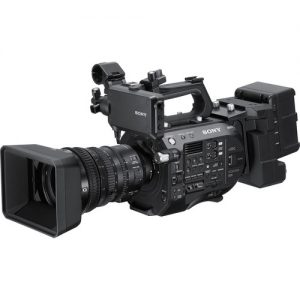
Sony FS7 Photo Credit: B&H Photo
Edu Rabin
My camera choice is driven by budget. When possible, I’ll use a RED Epic Dragon and Alexa Mini. Otherwise, the Blackmagic Ursa Mini Pro 4.6 K and Sony A7SII with Atomos Inferno are a great choice for low budget productions. I’m also very fond of the Zeiss 1.3 High Speed. I like the way they “destroy” the digital sharpness with all the flares and the “milky” feeling the image gets when framed and lit in a certain way.
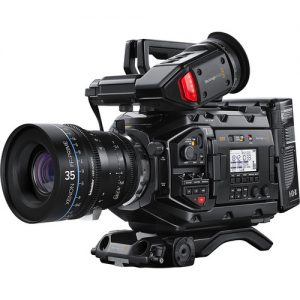
Blackmagic Ursa Mini Pro Photo Credit: B&H Photo
Stephan Alessi
I use the RED Epic Weapon for most of my motion shoots. If I’m shooting stills, I rely on the Canon 5D MK IV.
Ben McIntre
I use a lot of different camera systems, and just try to get the best thing for the job, regardless of what I own. In general I use a lot of Sony FS7, Canon C300 Mark II and Arri Amira. I also shoot with Alexa Mini or RED cameras on occasion. While I’ve owned a Sony FS7 for years, I just bought a RED Gemini that will be my new in-house camera for a wide variety of jobs I do.
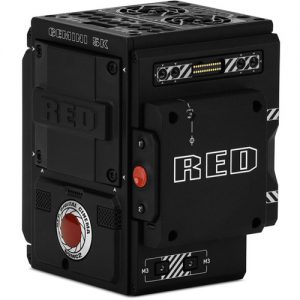
RED Gemini Photo Credit: B&H Photo
Why Is It Your Go-To?
Our experts mainly cited versatility and reliability in their reasoning behind why a particular camera was their go-to. For video, versatility means a camera can perform in a wide range of circumstances, and can deliver results for a variety of projects. For instance, our experts described the Sony FS7 as a workhorse that can deliver results for different types of shoots.
Stephan also added that he prefers the RED Epic Weapon because of the balance it offers between image quality and file size. Since his clients often need to edit the footage into various formats for online distribution and social media, he finds they have more options when using this particular camera.
Since Ben just switched from a Sony FS7, we wanted to get his thoughts on what drove the decision. He said:
I didn’t find the FS7 performed adequately in lowlight. There was too much image noise, and one of my long term projects involves a lot of dim settings, so it really showed…The RED Gemini is something I can use with a shoulder mount, or shoot handheld like the Canon C300 Mark II. I can dial in a data rate the production can handle. It’s just an easy camera to assign to anything.
What Would You Improve About Your Camera System?
Proving that no camera is perfect, all of our experts had a few criticisms of their preferred camera system, and identified missing features they’d like to see.
Scott Jansson
I have a few input-related improvements I’d like to see. I would love to be able to assign a button to switch between 4K and 1080. And, I could really use a start/stop button below the lens mount.
As for the rest of my wish list, I’d feel much better if the cable to the viewfinder was detachable. It would also be nice if the record symbol (Red/Green) on the viewfinder would stay on even if all the info in the display is off. An additional tally light visible to the camera operator could also solve that problem.
Also, I’d like the ability to simultaneously shoot a proxy while shooting 4k in camera. I’d like the other internal record options to be available without the extension unit. Finally, I’d like to see the extension unit be powered by Sony BP bricks rather than v-mounts.
Edu Rabin
Well, I would love to see more diversity in terms of equipment and lenses coming down to Porto Alegre and Brazil in general. Rentals are very expensive because of the high importation taxes we have to pay. I would love to have more lenses, anamorphic lenses for example, in my palette.
Stephan Alessi
One word: PRICES!
Ben McIntre
For my new camera, the RED Gemini, I’ve found the fan system can be a little loud when in hot weather. I have to bring more batteries with me now and change them more often, when compared to the Canon C300 Mark II or FS7. But I wouldn’t expect that to be a big problem. It just works great though. Very little to complain about so far.
Which Camera System Would Be Best for a Small One- or Two-Person Shoot in an Office or Home Setting, and Why?
Scott Jansson
For me it’s not really about the number of people involved in a home or office setting that will determine which camera system I use. It’s based entirely on budget, and project or client needs.
Camera functionality is fairly similar across all systems in terms of the ability to record an image, and the amount of time and work it takes to get up and running. That being said, I may limit the number of accessories involved if it causes camera build-time to be excessive without adequate support personnel, but again, it’s all dependent upon the project.
In a general use situation, the decision really comes down to personal taste, creative scope, level of technical aptitude, and what you’re willing to spend.
Stephan Alessi
The one you have easiest access to. Usually the camera you already have is the best choice.
Ben McIntre
I’d use an Alexa Mini or RED. The smaller the crew, the less you can do with light.
I really try to push for the best camera I can in those scenarios, even if it means less lighting gear and cheaper lenses to fit the budget. Some people go the other way with it, but I’ve always been drawn to a more naturalistic lighting style anyway, so for me that approach makes sense.
So, Which Camera Should You Get?
It’s the $100,000 question (yes, some camera systems cost that much, and more). As you can see, rather than there being one single answer, it comes down to several factors, including budget, your project-specific needs, and level of technical ability.
Expensive cameras are generally more complex to operate, but will perform well in a wider range of circumstances. Here, we’ve provided some general guidelines by budget because it’s an approximation for the level of technical aptitude required, and how versatile the camera is likely to be.
Budget
The camera systems our experts rely on cost $10,000 and up. But you definitely don’t need to spend that much to get a serviceable camera.
$1,000 and Under
Consider using the camera built into your phone. Modern iPhones and Androids perform very well for basic video needs, and can shoot 4K video. With the right accessories, you can create remarkably beautiful video with your phone. Even better? You’ll always have it on you.
Of course, you can always rent more upscale cameras while sticking to a lower budget so long as you are filming infrequently. This is also a great way to test out different camera models before committing to any particular option.
GoPro and other action cameras are another solid choice at this price point depending on what you’re filming.
$1,000 – $5,000
DSLR cameras with video capabilities are likely your best bet at this price point. Look for full frame sensors, and be sure to build lenses into your budget – you’ll need them!
If you prefer a video camera over a DSLR, many camera brands produce prosumer ranges at this price point. They’re often similar to professional cameras, but with more streamlined menus, fewer inputs, and smaller sensors. Not all models offer interchangeable lenses, which can be a plus or a minus depending on your needs.
$5,000 – $10,000
If you’re investing in a camera system to use on a regular basis, the Sony FS7 was a standout choice according to our experts for a variety of reasons. It’s at the high end of this range, but it’s a powerful and capable camera. A more budget-friendly option from Sony is the FS5, which is essentially a camcorder version of the FS7.
Another solid option at this price point is the Canon C200 EF, which our experts also mentioned as comparable to the FS7. It’s known for its particularly lifelike color tones. Canon also has an excellent reputation for reliability.
$10,000 and Up
If you’re one of the lucky ones for whom budget is less of a concern, the RED line of cameras is hard to beat. There were a couple different RED cameras that were mentioned in this post, including the RED Epic Weapon or Dragon, and RED Gemini. All are pricey to be sure, but also very solid, high-performing cameras.
Subscribe to our email list to get the next episodes in our How To Video series in your inbox. The next few episodes focus on cameras, and we’ve already covered audio and lighting. By following along, you’ll become an expert in all things video.
Got a question about cameras? Please share it in the comments below for expert advice!



